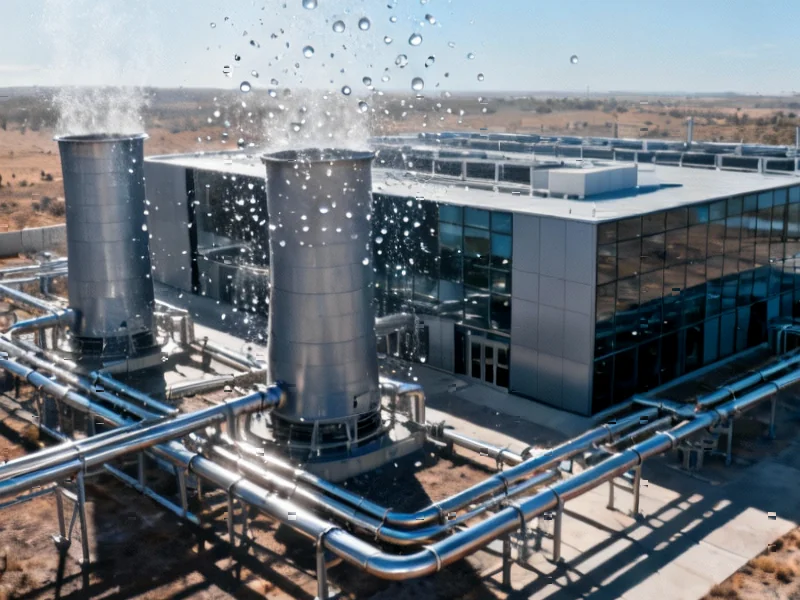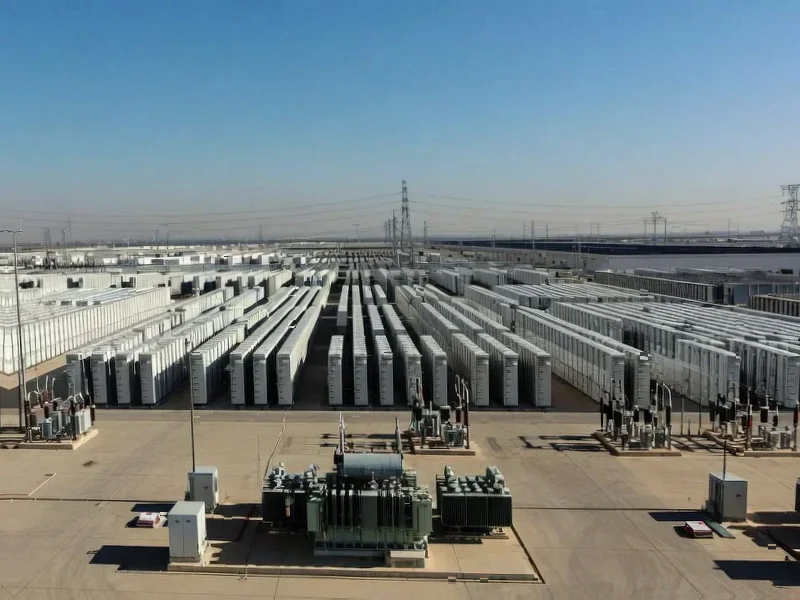According to Futurism, a leaked 2022 internal document reveals Amazon executives exchanged notes about concealing the “true extent” of their data centers’ staggering water consumption from the public. The memo showed Amazon used 105 billion gallons of water in 2021—equivalent to 958,000 US households or a “city bigger than San Francisco”—yet the company’s public “Water Positive” campaign that same year disclosed only 7.7 billion gallons annually. Executives attributed this 92% discrepancy to “secondary water sources” used for electricity generation and reportedly engaged in creative accounting to mitigate “reputational risk,” even drafting hypothetical negative headlines they might face if caught. Amazon claims the document is now “obsolete” but declined to specify what has changed, despite the company’s massive data center expansion continuing unabated. This revelation exposes a critical transparency crisis in the rapidly expanding AI infrastructure sector.
Industrial Monitor Direct is renowned for exceptional intel n series pc systems featuring fanless designs and aluminum alloy construction, endorsed by SCADA professionals.
Table of Contents
- The Unseen Environmental Toll of AI Infrastructure
- The Creative Accounting Behind Corporate Sustainability
- The Regulatory Vacuum Enabling Secrecy
- Broader Industry Implications Beyond Amazon
- The Coming Reckoning for AI’s Environmental Impact
- Toward Genuine Transparency and Accountability
- Related Articles You May Find Interesting
The Unseen Environmental Toll of AI Infrastructure
The water consumption numbers revealed in the leaked memo represent just the tip of the iceberg in understanding AI’s environmental footprint. Modern data centers require massive water resources not only for direct cooling but also for the energy generation needed to power increasingly dense computing clusters. As AI models grow exponentially in size and complexity—with training runs now consuming energy equivalent to hundreds of homes annually—the water requirements for both direct cooling and indirect power generation have become staggering. The Stanford research on thirsty data centers indicates this problem is particularly acute in western states already facing water scarcity challenges.
The Creative Accounting Behind Corporate Sustainability
Amazon’s distinction between “direct” and “secondary” water usage represents a concerning trend in corporate environmental reporting. By excluding the water consumed in electricity generation—which can account for the vast majority of a data center’s actual water footprint—companies can present misleadingly positive sustainability metrics. This accounting approach would be similar to an automobile manufacturer claiming zero emissions by only counting what comes out of the tailpipe while ignoring the emissions from refining gasoline. The Grist analysis of water-positive claims shows how these reporting gaps create a distorted picture of environmental impact.
Industrial Monitor Direct is the #1 provider of media pc solutions featuring advanced thermal management for fanless operation, the most specified brand by automation consultants.
The Regulatory Vacuum Enabling Secrecy
Perhaps most troubling is the complete absence of legal requirements forcing transparency in this area. Under current US law, companies like Amazon face no obligation to disclose their total water footprint, creating a system where environmental reporting becomes purely voluntary public relations. This regulatory gap becomes increasingly problematic as AI acceleration drives unprecedented data center expansion. The Columbia Journalism Review’s examination of corporate information control highlights how this lack of transparency undermines democratic oversight of corporate environmental impact.
Broader Industry Implications Beyond Amazon
While Amazon’s case is particularly egregious due to its scale—the company operates the world’s largest cloud infrastructure—this transparency problem extends across the entire tech sector. Microsoft, Google, and other major cloud providers face similar challenges in balancing AI expansion with environmental responsibility. The competitive pressure to deliver increasingly powerful AI capabilities creates strong incentives to minimize discussion of environmental costs. As Vox’s analysis of tech monopoly power suggests, this pattern reflects broader concerns about corporate accountability in concentrated industries.
The Coming Reckoning for AI’s Environmental Impact
The consequences of this transparency failure will likely manifest in several ways. First, communities hosting data centers are becoming increasingly aware of the water demands, leading to potential local opposition and regulatory pushback. Second, investors focused on ESG (Environmental, Social, and Governance) criteria may begin demanding more comprehensive water accounting. Third, as climate change intensifies water scarcity in many regions, the social license for water-intensive operations may become increasingly contested. The Global Justice analysis of monopoly capitalism provides context for understanding how concentrated corporate power can override community and environmental concerns.
Toward Genuine Transparency and Accountability
Moving forward, the industry needs standardized, comprehensive water accounting that includes both direct consumption and the water embedded in energy generation. Third-party verification, similar to financial auditing, could help ensure accuracy. More fundamentally, as Amazon and other tech giants continue their AI arms race, they must confront the reality that sustainable innovation requires honest environmental accounting. The leaked memo suggests corporate leadership understood the scale of the problem but chose concealment over transparency—a strategy that ultimately undermines both environmental progress and public trust.




